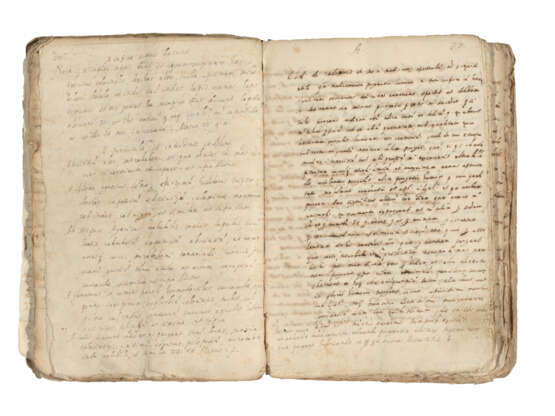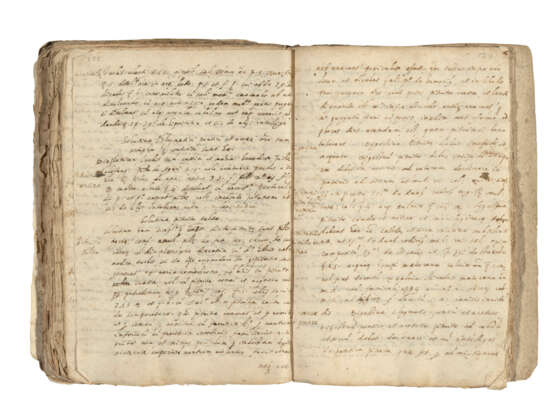ID 1105558
Lot 37 | Bernardino Baldi (1553-1617)
Estimate value
£ 6 000 – 8 000
Autograph manuscript, a medical and pharmaceutical compilation on paper, in Latin and Italian, [?Padua, c.1573]
A hitherto-unknown and unpublished autograph medical manuscript by the 16th-century Italian polymath Bernardino Baldi – mathematician, poet, historian, translator and abbot – perhaps dateable as early as his student years at the University of Padua.
c.210 x 145mm., 168 pages, irregular catchwords, the main text paginated ‘2-161’, autograph marginal annotations (incomplete, likely lacking the final gathering, some worming at inner margin, edges occasionally slightly cropped or tattered). Contemporary ‘carta rustica’ binding, lettered ‘B’ on the front cover.
The manuscript opens with three sets of verse in Italian, ff.1-4 (‘Piangar l'empie sorche […]’; ‘S'Amor m'havesse in altro stato colto […]’; ‘Niso poi che restar privo di vita […]’); the main body of the text, ff.5-84, comprises notes in Latin on a wide range of medical and pharmaceutical topics, with authorities including Yuhanna ibn Masawaih (‘Mesue’) and Avicenna quoted throughout. Descriptions are given of several diseases, often with the associated remedies and the manner in which they are to be prepared; topics covered include: how to proceed in the case of spitting blood; urine; the manufacture of medicines; pharmaceutical ingredients, especially plants; the digestive system; purgatives; remedies against ‘pituita salsa’ and other diseases; and vomit.
Born in Urbino in 1553, Bernardino Baldi received his early education from Federico Commandino, among other of the great humanist scholars of that city; in 1573, he enrolled in the faculty of medicine at the University of Padua, subsequently pursuing studies in logic and philosophy, while simultaneously applying himself to the composition of poetry. His first didactic poem, L'Artiglieria, and many more examples of his lyric poetry date from these student years. Baldi’s early brilliance won him an invitation in 1580 to the Gonzaga court at Mantua as a tutor to Ferrante Gonzaga, from whom he received the lavishly-funded abbey of Guastalla, where would complete the first biography of Copernicus in 1588. During his abbacy and, subsequently, under the patronage of the Duke of Urbino, Francesco Maria II della Rovere, Baldi is said to have written over a hundred works – in fields as broad as theology, mathematics, geography, history and poetry – the vast majority of which have remained unpublished.
We know of no other autograph manuscript by Baldi to have appeared at international auction (ABPC/RBH) and none of his medical or pharmaceutical writings appear to survive in published form. The loose structure of the text – a compilation of notes and observations – and the informal appearance of the manuscript, with frequent emendations and annotations, suggest it might date to Baldi’s days as a student of medicine – and a poet – at the University of Padua.
| Address of auction |
CHRISTIE'S 8 King Street, St. James's SW1Y 6QT London United Kingdom | ||||
|---|---|---|---|---|---|
| Preview |
| ||||
| Phone | +44 (0)20 7839 9060 | ||||
| Buyer Premium | see on Website | ||||
| Conditions of purchase | Conditions of purchase |




